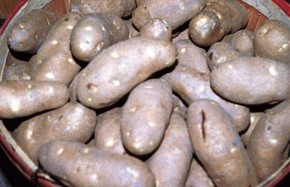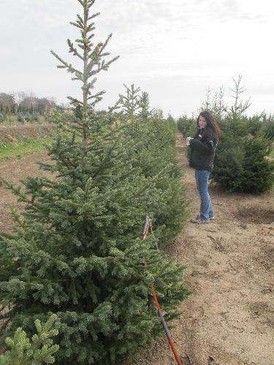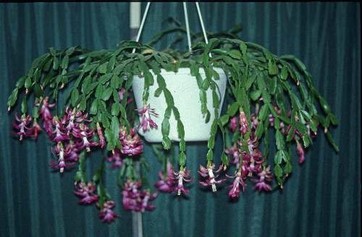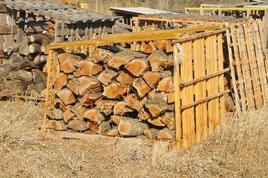Video of the Week:
Cold Frames and Hotbeds
Vegetables:
Storing Potatoes in Cold Temperatures

Ornamentals:
Choosing and Caring for Your Christmas Tree

- Needles are a dull, grayish-green color
- Needles fail to ooze pitch when broken apart and squeezed
- Needles feel stiff and brittle
- Needles pull easily off tree
Once you have your tree home, recut the trunk about one inch above the original cut. This will open up clogged, water-conducting tissues. Immediately place the trunk in warm water.
Locate the tree in as cool a spot as possible. Avoid areas near fireplaces, wood-burning stoves, heat ducts and television sets as the heat will result in excess water loss. Make sure the reservoir stays filled. If the reservoir loses enough water that the bottom of the trunk is exposed, the trunk will need to be recut. Adding aspirins, copper pennies, soda pop, sugar and bleach to the water reservoir have not been shown to prolong the life of a tree.
If you choose a living Christmas tree, be sure to dig the planting hole before the ground freezes.
Mulch the hole and backfill soil to keep them from freezing. Live trees should not be kept inside for more than three days. Longer periods may cause them to lose dormancy resulting in severe injury when planted outside. You may wish to tag the tree at the nursery and then pick it up a couple days before Christmas. After Christmas, move the tree to an unheated garage for several days to acclimatize it to outside temperatures. After planting, water well and leave some mulch in place to prevent the soil water from freezing and becoming unavailable for plant uptake. (Ward Upham)
Happy Holly-Days!

I often say that there are only two hollies that do well in Kansas, but we all know that rules are made to be broken. I love hearing stories of plants unexpectedly out of place. For example, just last year a gardener in Hays shared his Chinese holly (Ilex cornuta) photos to me. How exciting! Chinese holly is just on the edge of the northern part of Kansas’ cold hardiness zone. If I were a nursery grower in that area, I’d be collecting some seed and cuttings for propagation of those plants!
I recently visited the Johnson County K-State Research and Extension where they showcased winterberry holly (Ilex verticillata). A species that generally prefers acidic soils, it was performing well in the display garden. The bright red berries were already quite eye-catching. Some hollies require a male pollinator cultivar nearby in order to have a good berry set. Winterberry holly is an example of this so you’ll need to keep that in mind when planting this species.
If a local source of holly plants in the landscape is not within reach and you want to decorate with red berries and glossy green foliage, visit your local garden center or search online for a reputable greenery supplier so that you can make your own displays. After all, you’ll want a reliable source to help celebrate the happiness of the holly-days! (Cheryl Boyer)
Flowers:
Care of Christmas and Thanksgiving Cactii

Both of these cacti prefer bright indirect light. Too much sun can result in the leaves turning yellow. Common household temperatures are fine. Soil should be kept constantly moist but not waterlogged. Give them a light fertilization every other week. Blooming will normally cease in late winter to early spring, but continue to keep them moist and fertilized until fall. During the fall, stop fertilizing, and give the plants only enough water so the stems do not shrivel in order to encourage flower bud formation. Though these plants seem to flower best if kept a little pot bound, flowers will diminish if they are too crowded. If you haven't repotted in several years, or if you notice a decrease in flowering from the previous year, move the plant to a larger pot in the spring. If possible, move the plants outside for the summer. Choose a shady spot because these plants will not tolerate full sun. Leave the plants outside until frost threatens.
Normally, the plants will have received enough cool nights in the 50- to 55-degree range that flower buds will have formed. However, if they haven't, subjecting the plants to nights greater than 12 hours long and temperatures between 59 and 69 degrees can also generate flowers. Twenty-five consecutive long nights is enough for flower initiation. Place the plants in an unused room or cover them with a dark cloth or cardboard box to insure that they receive uninterrupted darkness. After the flower buds have formed, it takes an additional nine to 10 weeks for flowers to complete development and bloom. (Ward Upham)
Miscellaneous:
Firewood

Following are heat values (in million BTUs) per cord for various species of tree. The higher the value, the better the wood.
Ash, Green 22.8
Cottonwood 15.9
Elm, American 19.8 Difficult to split
Elm, Siberian 20.9 Difficult to split
Hackberry 21.0
Honeylocust 25.6
Locust, Black 28.3 Difficult to split
Maple, Sugar 24.0
Maple, Silver 18.9
Mulberry 25.3
Oak, Red 24.0
Oak, Bur 24.9
Oak, Post 25.6
Osage Orange (Hedge) 32.6 Sparks, do not use in open fireplace
Sycamore 19.5 Difficult to split
Walnut, Black 21.8
The Kansas Forest Service has a publication titled “Managing Your Woodland for Firewood” that is quite helpful. See http://www.ksre.ksu.edu/bookstore/pubs/mf773.pdf.
Remember to obtain firewood locally. Emerald Ash Borer is now in Kansas because of transported wood. (Ward Upham)
Contributors: Cheryl Boyer, Nursery Crops Specialist; Ward Upham, Extension Associate
 RSS Feed
RSS Feed
